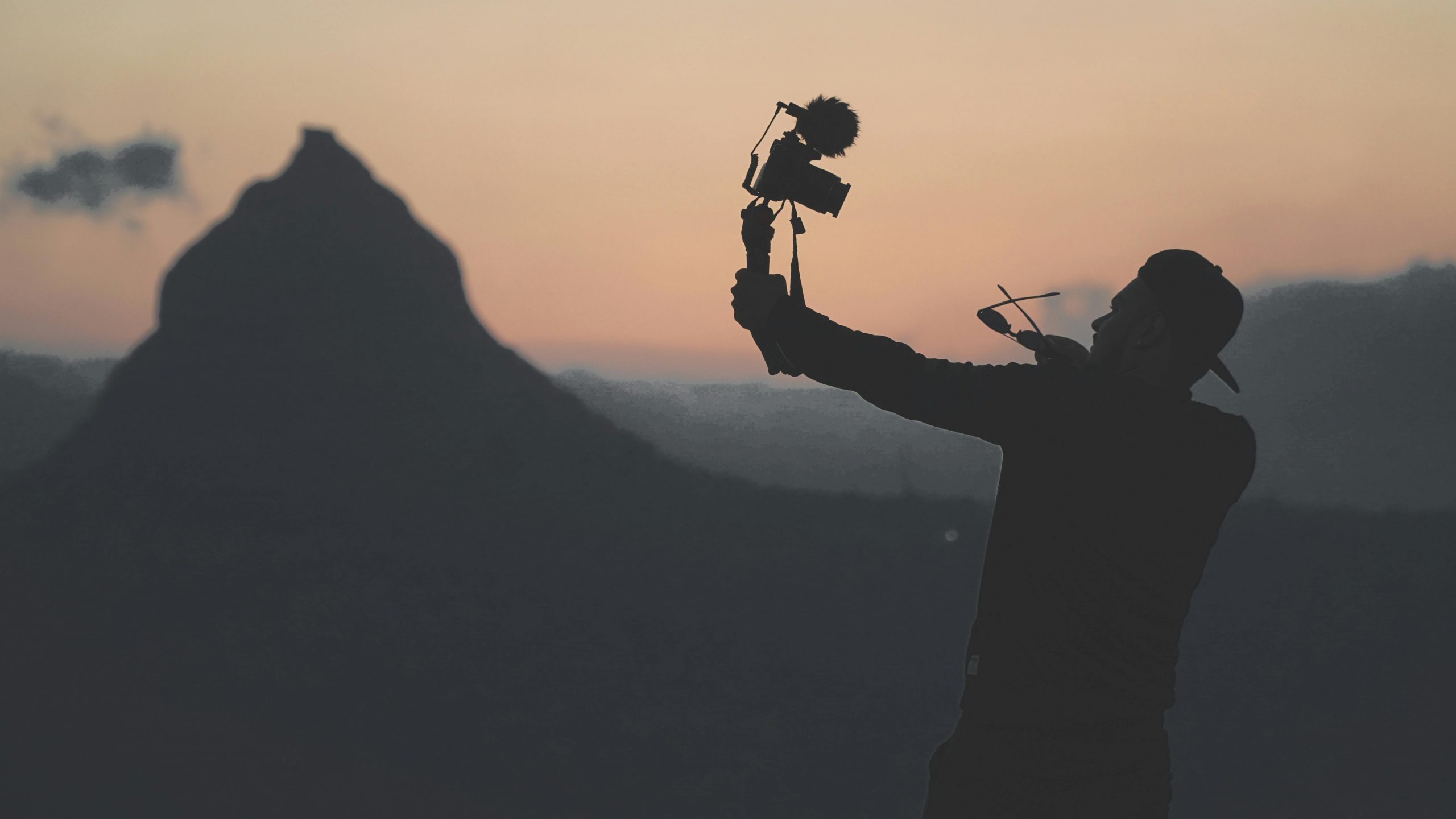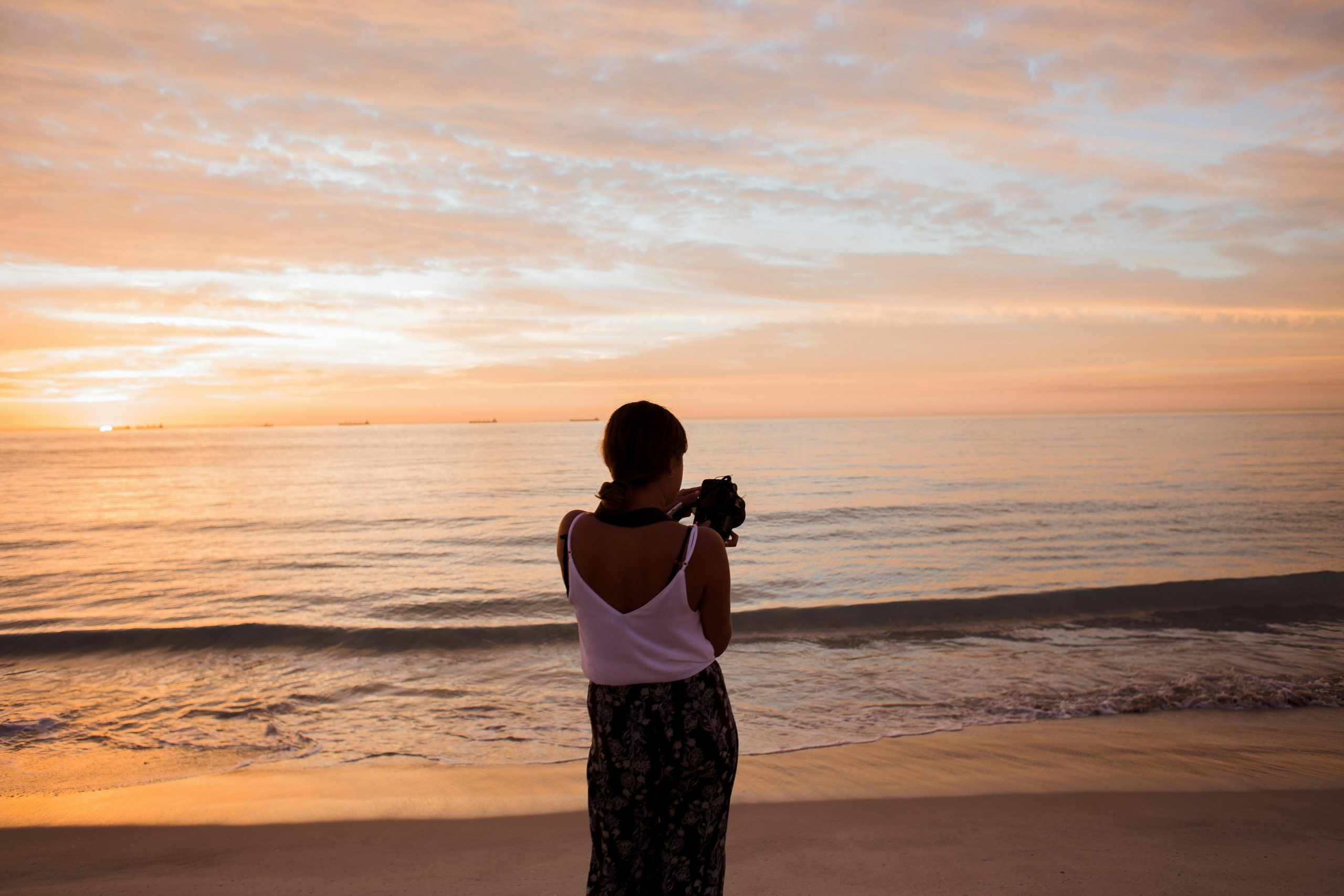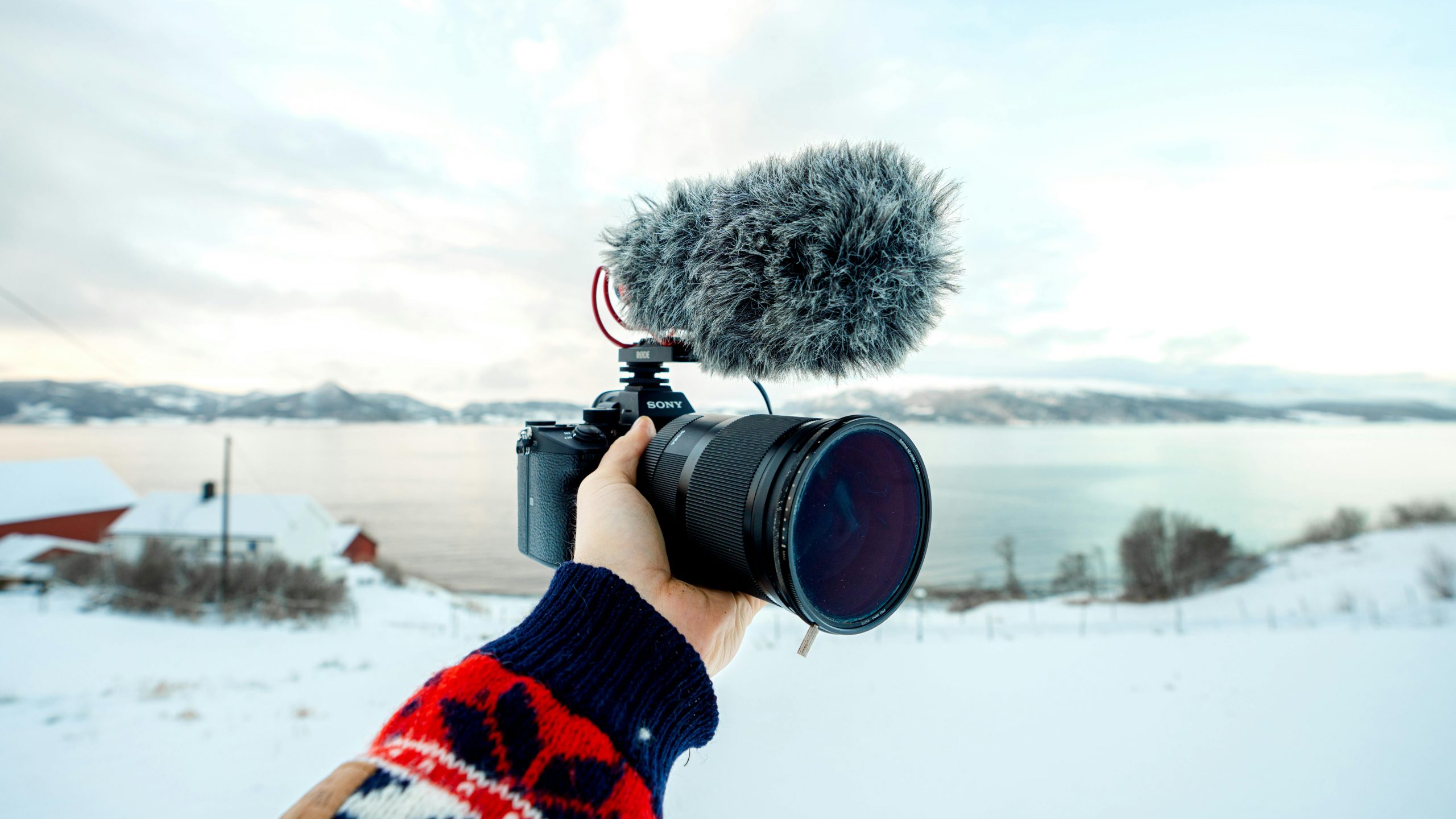Disclaimer: Best Travel Videos. This site provides travel content for informational purposes only.
If you’re a travel enthusiast who dreams in drone shots and thinks in time-lapse transitions, then you already know: the right camera can make or break your travel vlog. But with so many models out there—from mirrorless marvels to pocket-sized action cams—how do you know what really qualifies as the best camera for vlogging?
Spoiler alert: It’s not just about 4K.
Now, let’s break down the must-have features, essential considerations, and smart buying tips to help you choose the camera that works for you and your style of travel content.
Why the Camera Matters More Than Ever
In today’s content-saturated world, travel vlogging is more than recording your trip—it’s storytelling, branding, and connecting with a global audience. The right camera helps you:
- Deliver sharp, high-quality visuals that draw people in
- Handle changing environments and lighting conditions
- Stay light and mobile for spontaneous adventures
- Record crisp audio or support better mics
- Shoot smooth, stable footage without extra gear
Choosing the best camera for vlogging isn’t about hype. It’s about matching features to your workflow, goals, and destinations.
What Type of Travel Vlogger Are You?

Before you dive into specs, ask yourself this:
- Are you a backpacker hopping between hostels?
- A luxury traveler filming food tours and boutique hotels?
- An outdoor adventurer climbing mountains and diving reefs?
- A digital nomad capturing cafes, co-working spaces, and city scenes?
Understanding your content style will help you prioritize certain features. For example:
- Backpackers need lightweight, durable gear with long battery life.
- Luxury vloggers may want cinematic image quality and low-light performance.
- Adventure travelers should look for waterproofing and rugged builds.
- Urban storytellers benefit from fast autofocus and discreet setups.
What Makes the Best Camera for Vlogging? Key Features to Look For
Choosing the best camera for vlogging means balancing quality, mobility, and practicality—especially when you’re on the move. Let’s explore the features that truly make a difference for travel content creators.
1. Does It Have a Flip Screen?
A flip screen, also known as a fully articulating screen, is more than just a convenience—it’s a vlogger’s secret weapon.
Why it matters:
- Framing yourself: See if you’re in the shot while filming solo.
- Focus check: Make sure your face is sharp, especially with shallow depth of field.
- Angle variety: Capture creative perspectives from above, below, or side angles while still seeing the screen.
- Discreet filming: For subtle travel shots in public spaces, tilt screens help you avoid drawing attention.
Ideal for: Solo travel vloggers, selfie-style shooters, and creators doing walk-and-talk videos in unfamiliar locations.
2. How Good Is the Autofocus?
When you’re filming on the fly—walking through a market, stepping into a tuk-tuk, or shifting from foreground to landscape—you need autofocus that just works.
Look for:
- Face and Eye Detection: Locks onto your face and keeps it sharp.
- Smooth Transitions: Focus shifts naturally between subjects, not jerky or distracting.
- Minimal “Hunting”: The camera doesn’t constantly search for focus or bounce in and out.
Top Picks: Sony’s Real-Time Eye AF and Canon’s Dual Pixel Autofocus are industry favorites for their accuracy and speed.
Why it matters: Missed focus in travel vlogs is distracting and can ruin otherwise perfect footage. Fast-moving environments require responsive, intelligent autofocus.
3. Is Image Stabilization Built In?
Even the steadiest hand can’t compete with a good stabilization system—especially when you’re trekking, biking, or filming while walking.
Types of stabilization:
- IBIS (In-Body Image Stabilization): Moves the camera sensor to counteract shake.
- Digital/Electronic Stabilization: Crops and adjusts the image to simulate steadiness.
- Lens-Based Stabilization (OIS): Some lenses have built-in stabilization.
Why it matters for travel vloggers:
- No gimbal needed: Reduce gear and travel lighter.
- Smoother B-roll: Panning cityscapes or walking through crowds looks polished.
- Less post-editing: Minimal need for software stabilization during editing.
4. What About Video Resolution and Frame Rate?
4K has become the standard, but the story doesn’t end there. You need to think about how the camera handles resolution and frame rates.
Consider:
- 4K at 30fps vs 60fps: Higher frame rates are smoother—ideal for action or scenic motion.
- 1080p at 120fps: Lets you create buttery slow-motion shots for cinematic transitions.
- Bitrate and compression: A camera that compresses less keeps higher quality files.
- Color science and dynamic range: Better highlight and shadow detail, more natural skin tones, and vibrant landscapes.
Reality check: If your main platform is YouTube or mobile-focused platforms like Instagram or TikTok, 1080p with great color might be just fine.
5. Does It Support External Microphones?
Your viewers will forgive a shaky shot—but they’ll bounce fast if the audio is bad.
Must-have audio options:
- 3.5mm mic input: Allows external microphones like lavaliers or shotgun mics.
- Cold shoe mount: For attaching a mic directly to your camera.
- USB-C or digital audio support: Newer cameras may skip the traditional jack but offer adapters.
Why external mics matter:
- Directional sound: Focus on your voice and reduce background noise.
- Ambient capture: Let natural sounds (waves, city noise, birdsong) come through clearly.
- Consistency: Built-in mics vary in quality, especially in windy or crowded environments.
Pro tip: Pair your camera with a compact mic like the Rode VideoMicro or DJI Mic for a simple, high-quality audio setup.
6. How Portable Is It?
You’re not just shooting from a studio—you’re hopping trains, hiking trails, and cramming gear into overhead compartments.
Key portability factors:
- Weight: Under 1.5 lbs (camera and lens) is ideal for all-day use.
- Size: Smaller bodies fit into carry-ons and can be used discreetly in public.
- Durability: Rugged builds and weather-sealing are a plus for unpredictable conditions.
Travel camera formats to consider:
- Mirrorless: Excellent image quality, interchangeable lenses, moderate size.
- Compact (Point-and-Shoot): Ultra-portable, some with 1-inch sensors.
- Action Cams: Tiny, tough, and great for action B-roll.
- 360 Cameras: Fun, immersive shots but often best as secondary cams.
Remember: The best camera is one you’ll actually carry and use consistently—not the one that’s perfect on paper but too heavy to take with you.
What About Battery Life and Charging Options?
When you’re hiking a trail or wandering a city, you don’t want to constantly hunt for outlets. Consider:
- Average battery life in video mode
- USB-C charging capability for power banks
- Availability of spare batteries
Some cameras with high performance drain quickly, so plan accordingly.
Can It Handle Different Lighting Conditions?

Travel means unpredictable lighting. A good vlogging camera should perform well in:
- Bright daylight
- Low-light restaurants and bars
- Golden hour and night streets
Look for a larger sensor (like APS-C or 1-inch) and good ISO performance. Fast lenses (with f/1.8 or f/2.0) also help in dim settings.
Can It Livestream or Shoot Vertical Video?
In today’s content landscape, it’s not just about polished YouTube videos—it’s also about connecting with your audience in real time or repurposing content for mobile-first platforms.
Why it matters:
- Livestream-ready cameras let you go live from remote locations with solid video and audio quality.
- Vertical video support makes it easier to capture content for TikTok, Instagram Reels, or YouTube Shorts—without awkward cropping later.
Look for:
- Clean HDMI output or USB streaming compatibility.
- Easy switching between horizontal and vertical modes.
- Flip screen that rotates 90° for vertical framing.
Ideal for: Vloggers who engage with their audience live, or who want to streamline short-form content production without a separate setup.
How Versatile Is It for Creative Storytelling?
Sometimes the best moments happen in a flash—or require a little creative flair. The right camera should adapt to both.
Features that boost creativity:
- Time-lapse and hyper-lapse modes: Great for sunsets, city scenes, or fast-paced travel movement.
- Slow-motion modes: Perfect for highlighting surf shots, cliff dives, or dramatic moments.
- Creative filters or in-camera effects: Let you quickly add stylized looks without heavy editing.
- Custom picture profiles: Enable you to create a distinct visual identity.
Why it matters: Travel vlogs are more than logs—they’re cinematic narratives. A camera that encourages experimentation keeps your content fresh and visually engaging.
How Easy Is It to Use on the Road?
When you’re shooting daily, ease of use matters. You want intuitive menus, fast startup time, and customizable controls.
Bonus if it has:
- Touchscreen controls
- Built-in Wi-Fi/Bluetooth for transferring footage
- Smartphone remote control app
Travel Vlogger Essentials: Bonus Features to Look For
While not mandatory, these extras can elevate your workflow:
- Weather sealing for unpredictable climates
- Built-in ND filters for shooting in bright light
- Log profiles or RAW video for color grading
- Dual card slots for backup
Cameras vs. Smartphones: Still a Debate?
Smartphones have come a long way and can be fantastic for travel vlogging. Consider a dedicated camera if you:
- Want better depth of field and lens options
- Need consistent quality and performance
- Shoot longer videos or cinematic sequences
That said, many creators use a mix: phone for convenience, camera for quality.
Top Camera Picks for Travel Vloggers
As vlogging technology continues to evolve, several cameras have risen to the top, offering an excellent balance of portability, image quality, and advanced features for travel vloggers.
1. Sony ZV-1 II
Why it’s great:
Compact, lightweight, and designed specifically for vlogging, the Sony ZV-1 II delivers superb 4K video, advanced autofocus, and a flip screen. With improved low-light performance and enhanced microphone input options, it’s a top choice for solo travelers and content creators.
Key feature: Real-Time Eye Autofocus and background blur for professional-looking shots.
2. Canon EOS R8
Why it’s great:
A mirrorless powerhouse with 4K video, 10-bit color depth, and impressive image stabilization, making it perfect for capturing stunning travel moments. It’s also known for its excellent lens compatibility and easy-to-use controls.
Key feature: Dual Pixel Autofocus for smooth, accurate focusing during action shots.
3. DJI Pocket 3
Why it’s great:
For ultra-portable vlogging with exceptional video quality, the DJI Pocket 3 is hard to beat. With its built-in gimbal and 4K capabilities, it’s ideal for vloggers who need a camera that fits in their pocket without sacrificing smooth footage.
Key feature: 3-axis gimbal stabilization for steady, cinematic shots.
4. GoPro HERO 12
Why it’s great:
For extreme adventures and action-packed vlogs, the GoPro HERO 12 is unbeatable. Waterproof, shockproof, and equipped with HyperSmooth stabilization, it’s the go-to camera for adventurous travelers who want to capture dynamic footage in any environment.
Key feature: 5.3K video resolution and enhanced image stabilization for crystal-clear action shots.
5. Panasonic Lumix GH6
Why it’s great:
A favorite among professional vloggers, the GH6 offers unmatched video quality with 5.7K recording, 10-bit color, and great autofocus performance. It’s a great option for travelers looking for a more advanced, cinematic look for their vlogs.
Key feature: 4K 120fps for stunning slow-motion shots.
These cameras offer a range of options depending on your vlogging style, whether you’re looking for portability, action-ready gear, or cinematic quality. Choosing the right one depends on your travel goals and creative vision.
In Summary
Choosing the right camera for your travel vlogs is a personal decision that directly impacts the quality and appeal of your content. Whether you’re trekking through mountains, filming street food tours, or capturing breathtaking drone shots, the best camera will align with your travel style, creative needs, and technical preferences.
As a smart travel vlogger, prioritize key features like portability, image stabilization, excellent autofocus, and robust audio support, ensuring your gear is adaptable to any situation. With the right camera in hand, you’ll be able to tell compelling stories, capture vivid moments, and connect with your audience like never before.
Ultimately, the best camera for vlogging isn’t the one with the most advanced specs, but the one that enhances your creative process and allows you to focus on what matters most—capturing the adventure, the journey, and the unforgettable experiences along the way.
